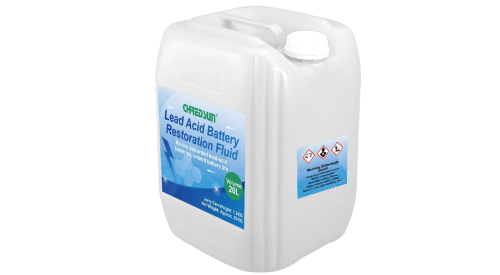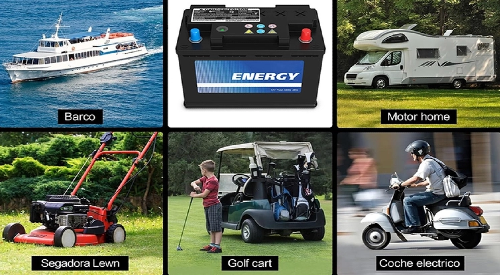
With growing awareness of sustainable practices and rising maintenance costs, battery upkeep has become a significant concern for both individuals and enterprises. Whether managing a fleet of vehicles, powering an industrial UPS system, or maintaining backup energy storage for solar arrays, the question arises: Is it more economical to restore batteries or replace them outright?
Thanks to advances in battery care technology, particularly battery restore solutions like Lead Acid Battery Restoration Fluid, users now have cost-effective alternatives to complete battery replacement. But when does restoration truly make financial sense, and when is replacement unavoidable? This article offers a comprehensive comparison between battery restoration and replacement to help you make informed decisions based on your needs and budget.
Cost Analysis: Restore vs. Replace
The High Cost of New Batteries
Lead acid batteries remain one of the most commonly used battery types in the automotive, industrial, and energy storage sectors. However, their replacement costs vary significantly:
Automotive starter batteries: $100–$250 per unit
Industrial forklift or UPS batteries: $500–$2,000+
Solar storage deep-cycle batteries: $300–$1,500 each
When managing large-scale systems or multiple vehicles, the total cost of battery replacement can be staggering. Additionally, frequent battery replacements increase operational downtime and strain maintenance budgets.
The Affordable Alternative: Battery Restore Solutions
By contrast, using a battery restore solution, such as Lead Acid Battery Restoration Fluid, provides a budget-friendly way to extend battery life. The cost of a restoration session typically includes:
Restoration fluid: $5–$20 per battery
Labor time: 20–60 minutes per battery
Diagnostic testing (optional): minimal or included in service packages
On average, restoring a battery costs 10%–30% of what a new replacement would. When applied properly, this method can rejuvenate the chemical balance inside old lead acid batteries, breaking down sulfate buildup and restoring the internal electrolyte composition. For both businesses and individuals, the savings quickly add up.
Lifespan Extension through Restoration
How Long Does Restoration Extend Battery Life?
One of the most compelling advantages of using a battery restore solution is its ability to extend the functional lifespan of lead acid batteries without the need for a full replacement. Many batteries fail prematurely due to sulfation, a chemical process where lead sulfate crystals build up on the battery plates, significantly reducing capacity and conductivity. However, these batteries are often structurally sound, meaning they can be revived with the proper treatment.
By applying a Lead Acid Battery Restoration Fluid, users can often restore 70–90% of the lost capacity, depending on the severity of the sulfation and the condition of the battery. This restoration does not merely offer a short-term fix; it can add 6 to 18 months of extended use, turning what might be a “dead” or underperforming battery into a reliable energy storage unit once again.
In addition to restoring capacity, the fluid also reduces the risk of sudden failures, voltage drops, and starting issues, which are especially critical in automotive, industrial, and solar backup applications. The fluid works by chemically dissolving the hardened lead sulfate crystals and improving the electrolyte’s conductivity, allowing the battery plates to regain their reactive properties.
That said, it’s important to note that the actual life extension depends on several factors, including:
The battery’s age and previous usage cycle
Environmental conditions such as temperature and humidity
Physical integrity (no plate detachment, no swelling or cracks, minimal corrosion)
Batteries with minor degradation but good structural condition tend to respond best to the battery restore solution. In contrast, heavily damaged units may not see significant improvements and may still require replacement.
Comparing Lifecycles: Restoration vs. Replacement
A new lead acid battery typically comes with a 2–5 year lifespan, depending on quality, brand, and usage patterns. These batteries are designed for long-term performance, often with warranties and built-in design buffers to support deep discharge cycles, temperature changes, and vibration.
In comparison, a restored battery using a product like Lead Acid Battery Restoration Fluid generally delivers an additional 6 to 18 months of service life. While this doesn’t match the longevity of a new unit, the cost savings and reduced environmental impact make restoration an attractive option for many users.
This becomes especially beneficial in the following contexts:
Budget-sensitive users looking for a short-term solution while planning for full replacement
Fleet operators managing dozens or hundreds of batteries and needing to stagger replacements
Renewable energy users who want to maximize battery use before investing in costly upgrades
Ultimately, battery restoration is not about replacing the value of a new battery, but about recovering lost performance and delaying costly replacements. When integrated into a regular maintenance program, it enables users to extend battery lifecycles responsibly and cost-effectively—without compromising system reliability.

Environmental and Operational Considerations
The Cost and Impact of Battery Disposal
Lead acid batteries are hazardous waste. Improper disposal can lead to:
Soil and groundwater contamination
Air pollution from lead particles
Health hazards for humans and animals
Recycling lead acid batteries is a legal requirement in many regions, but recycling processes incur fees and logistical challenges, especially for enterprises with high battery turnover.
By using a battery restore solution, businesses and individuals can:
Delay the need for recycling
Reduce the frequency of hazardous waste handling
Minimize environmental impact
Each restored battery means one less unit sent to the recycling facility, contributing to greener operations.
Operational Benefits: Reducing Downtime and Waste
Battery failures can halt operations, delay transportation, or disrupt energy supply. These interruptions lead to:
Productivity loss
Emergency service calls
Increased resource usage
By maintaining batteries with Lead Acid Battery Restoration Fluid, organizations reduce unexpected breakdowns and optimize usage of existing assets. This helps ensure that resources are maximally utilized before new investments are made, enhancing operational efficiency and sustainability.
Case-Based Comparisons
Scenario 1: Enterprise-Scale Use of Lead Acid Batteries
A logistics company operates a fleet of 200 delivery vans, each with a lead acid starter battery. Replacing all batteries every 2–3 years costs roughly $30,000–$50,000.
By integrating a battery restore solution program, the company tests and treats batteries showing performance decline. The result:
70% of batteries are revived
Average cost drops to $6,000–$8,000 per cycle
Battery usage extended by 12 months on average
Net savings: $20,000–$40,000 per maintenance cycle, with reduced environmental burden and less downtime.
Scenario 2: Private Vehicle Owner
A personal car battery begins to show signs of failure—dim lights, slow cranking, and trouble starting. A replacement costs $150.
Instead, the owner applies Lead Acid Battery Restoration Fluid and restores 80% of the battery’s performance for only $15.
Battery functions reliably for an additional 10 months
No towing or service center visit required
$135 saved, not including the value of time and convenience
Scenario 3: Solar Energy Storage Systems
A rural property uses a bank of deep-cycle lead acid batteries for solar energy storage. These batteries degrade over time due to daily cycling.
Instead of replacing all batteries every 3 years, the owner uses battery restore solutions every 12 months. The results:
80% of batteries revived
Replacement cycle extended to 4–5 years
Lower capital expenditures and enhanced system reliability
When Replacement Is Inevitable
While battery restore solutions offer remarkable benefits, not all batteries can be saved. Restoration fluids are most effective when structural integrity is still intact. In the following cases, replacement is the only option:
How to Decide: Restore or Replace?
Step 1: Visual Inspection
Look for signs of physical damage or leaks. If present, discard safely.
Step 2: Voltage and Load Test
Check voltage and cranking amps. Low but stable voltage may indicate a recoverable battery.
Step 3: Apply Restoration Fluid
If tests show potential, apply Lead Acid Battery Restoration Fluid and monitor improvements.
Step 4: Re-Test After 24–48 Hours
If the battery shows no signs of improvement, replacement is likely necessary.
Combining restoration with regular diagnostics helps determine when repair is viable and when new investment is justified.
Conclusion
In today’s cost-conscious and eco-aware world, battery restore solutions provide a smart, economical, and eco-friendly way to extend battery life and reduce maintenance costs. While some batteries still require replacement, using products like Lead Acid Battery Restoration Fluid can significantly lower expenses and environmental impact.
Recommendations:
Budget-conscious users should consider restoration before replacement.
Fleet managers and solar operators can benefit from a routine restoration program.
For sustainability, restoration helps reduce waste and prolong battery cycles.
To learn more about effective battery restoration or to find reliable solutions, we recommend connecting with RedSun Group—a trusted provider of professional battery restore solutions. Visit their website or contact them directly to explore how they can help reduce your battery-related costs while supporting greener operations.
English
العربية
Français
Русский
Español
Português
Deutsch
italiano
日本語
한국어
Nederlands
Tiếng Việt
ไทย
Polski
Türkçe
አማርኛ
ພາສາລາວ
ភាសាខ្មែរ
Bahasa Melayu
ဗမာစာ
தமிழ்
Filipino
Bahasa Indonesia
magyar
Română
Čeština
Монгол
қазақ
Српски
हिन्दी
فارسی
Kiswahili
Slovenčina
Slovenščina
Norsk
Svenska
українська
Ελληνικά
Suomi
Հայերեն
עברית
اردو
Afrikaans
Gaeilge
नेपाली
Aymara
Беларуская мова
guarani
Krio we dɛn kɔl Krio
Runasimi
Wikang Tagalog













